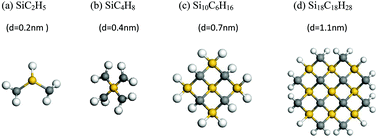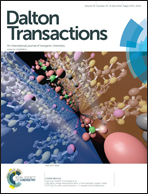A theoretical study of electronic and optical properties of SiC nanowires and their quantum confinement effects
Abstract
We have performed a theoretical study of silicon carbide nanowires (SiCNWs) within the framework of first-principles calculations by incorporating the size effect and hydrogen terminated surface. Specifically, the variation of the energy gap and optical absorption spectra for hydrogen passivated SiCNWs and pristine wires are examined with respect to the wire diameter. All the [001]-orientated SiCNWs derived from the parent zinc-blende (3C) exhibit semiconducting behavior. Our study demonstrates that the saturated 3C-SiCNWs grown along the [001] direction with larger wire sizes are energetically more favorable than the wires with a smaller diameter. Additionally, the energy gaps are reduced with the increment of wire size because of the quantum-confinement effects. The unsaturated SiCNWs possess smaller band gaps than those of saturated ones when the Si- and C-dangling bonds are passivated by hydrogen atoms. Interestingly, the surface terminated by hydrogen atoms substantially alters the onset of absorption as well as the spectrum behavior at upper energies. Moreover, some pronounced fine structures in the absorption peak are conspicuous at the lower energy region of hydrogen saturated SiCNWs as the wire size increases. We find that the distributions of the highest occupied molecular orbitals and the lowest unoccupied molecular orbitals are uniform along the wire axis, which reveals that the SiCNWs are exceptional candidates in producing nano-optoelectronic devices.


 Please wait while we load your content...
Please wait while we load your content...